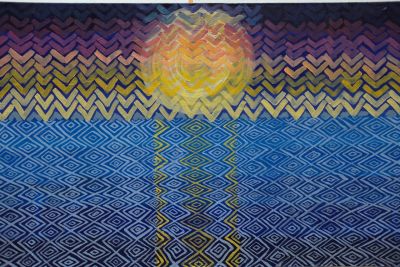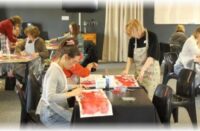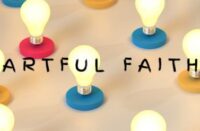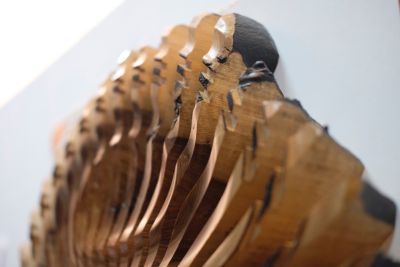
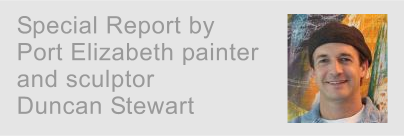
Harvest Christian Church, Port Elizabeth, recently held a debut art exhibition for what I believe will develop into an increasingly significant event on their annual calendar.
It was very good, from the attention to detail throughout the show, the initial call for artists and work, to the arrangement and hanging of the work and the opening evening itself.
Selecting work from a broad spectrum of artists with varying levels of experience can be a tricky process that was made to seem simple by Ken Holloway, the creative pastor at Harvest and his team who curated a show that incorporated sculpture, ceramics, photography, painting, drawing, and mixed media in a well thought-out space that flowed easily. What a great foundation on which they can build into the future.
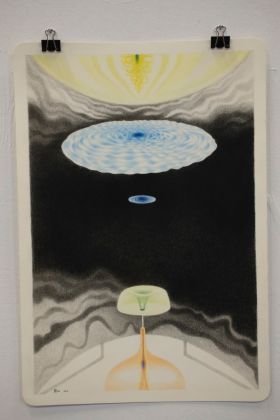 The theme for the exhibition was “Deeper”, which gave the artists — myself included — lots of freedom for interpretation. And the concept of freedom is really important for anybody who wants to do artistic work.
The theme for the exhibition was “Deeper”, which gave the artists — myself included — lots of freedom for interpretation. And the concept of freedom is really important for anybody who wants to do artistic work.
In fact, without freedom, there is no creativity, no originality, no art and ultimately even no Christianity. But freedom to do what exactly, to create what?
In his book, Art and the Bible, Francis Schaeffer offers some helpful insights: “Christianity is not just involved with ‘salvation’, but with the total man in the total world. The Christian message begins with the existence of God forever, and then with creation. It does not begin with salvation. We must be thankful for salvation, but the Christian message is more than that. Man has a value because he is made in the image of God. Christian art is the expression of the whole life of the whole person as a Christian. What a Christian portrays in his art is the totality of life. Art is not to be solely a vehicle for some sort of self-conscious evangelism.”
When Schaeffer refers to Christian art being an expression of the whole life of the whole person, that encompasses my life as it journeys through salvation and sanctification, from sinner to saint, with all the highs and lows, reflecting not only my brokenness but also my beauty and marvelousness as one made in God’s image.
The terms “Christian artist” and “Christian art” are labels I have always struggled with. Is there really such a thing as “Christian” art? Certainly there is art made by Christians, but should all of that art by necessity have a “Christian” theme?
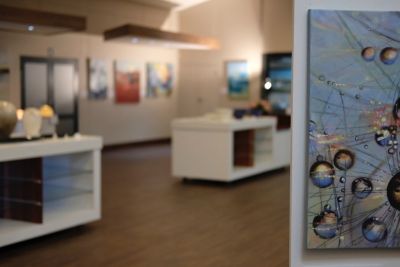
Michael Minkoff writes: “Which would you rather have? Strong Christians staying within the Church making expertly crafted bronze sculptures, landscape paintings, and instrumental songs (none of which have the superficial appearance of being ‘Christian art’) … or outwardly ‘spiritual’ ‘Christian’ artists writing praise songs, making altar call movies, painting religious tableaus, but not actually believing in Christ or submitting to His church. The emphasis on ‘Christian art’ over good art made by authentic Christians has been detrimental to the Church and her aesthetics.”
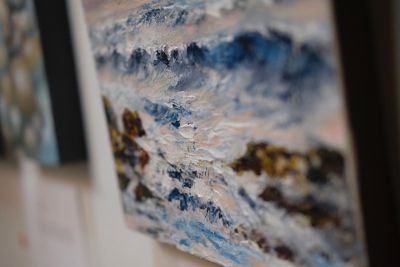
He goes on to say there is often an unspoken emphasis for Christians to make “Christian art”, but actually the first priority for any Christian, whether artist, anaesthetist or astronaut, should be the pursuit of knowing and enjoying Christ (Matt. 6:33). This inverted or misguided emphasis has produced widespread hypocrisy in mainstream Christian arts communities.
As artists we can illustrate impressive truths while inside we are a mess – where is the authenticity in that? And the Church is often reluctant to own or support the brokenness that art can reflect because it can be messy and the secular world rightfully deplores our hypocrisy
I am aware that I am painting with very broad brush strokes; there are many issues that I haven’t taken into account as I scribble these thoughts but I am excited to start the conversation and applaud Harvest therefore in this early endeavour to gain a deeper understanding of God’s intention for art and artists.
